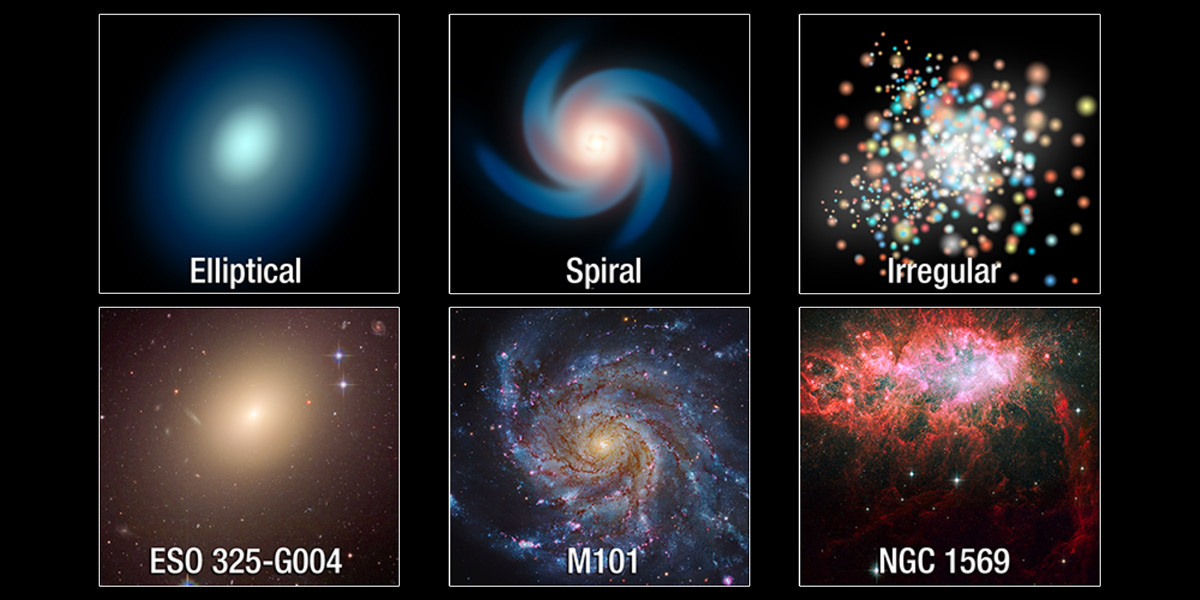Which List Correctly Names the Three Types of Galaxies?
Understanding the different types of galaxies is essential in the field of astronomy. Galaxies are vast systems of stars, gas, and dust held together by gravity. Scientists have categorized galaxies into various types based on their shapes, sizes, and characteristics. This article aims to provide a comprehensive overview of the three main types of galaxies, discussing their distinctive features and contributions to our understanding of the universe.

Type of Galaxies
I. Elliptical Galaxies:
Elliptical galaxies are among the most common types found in the universe. They are characterized by their smooth, elliptical shapes and lack prominent disk structures. Here are some key features of elliptical galaxies:
1. Shape: Elliptical galaxies have a rounded, elongated shape resembling an ellipse.
2. Structure: They lack prominent spiral arms and instead possess a smooth, featureless appearance.
3. Stellar Population: Elliptical galaxies mainly consist of old stars, with minimal ongoing star formation.
4. Size: They range in size from relatively small dwarf ellipticals to massive giant ellipticals.
II. Spiral Galaxies:
Spiral galaxies are known for their distinctive spiral arms that wrap around a central bulge. These galaxies often exhibit vibrant star formation and possess a disk-like structure. Here are the key characteristics of spiral galaxies:
1. Shape: Spiral galaxies have a central bulge surrounded by spiral arms that extend outward.
2. Structure: They possess a flattened disk with spiral arms containing young stars, gas, and dust.
3. Stellar Population: Spiral galaxies contain a mix of old and young stars, with ongoing star formation.
4. Types: Spiral galaxies are further classified as barred or unbarred, depending on the presence of a central bar structure.

Type of Galaxies
III. Irregular Galaxies:
Irregular galaxies do not fit into the elliptical or spiral categories due to their irregular shapes and structures. They often showcase significant ongoing star formation and lack well-defined features. Here are the notable characteristics of irregular galaxies:
1. Shape: Irregular galaxies lack a distinct shape or structure, appearing amorphous or chaotic.
2. Stellar Population: They contain a mix of old and young stars, with active star-forming regions.
3. Size: Irregular galaxies can vary in size, ranging from small, compact systems to larger, more extended ones.
4. Origin: Some irregular galaxies are believed to have formed from gravitational interactions or mergers between other galaxies.
In summary, the three main types of galaxies are elliptical, spiral, and irregular galaxies. Elliptical galaxies exhibit an elongated, featureless shape, while spiral galaxies possess a central bulge and prominent spiral arms. Irregular galaxies, on the other hand, showcase irregular shapes and structures. Understanding these types of galaxies allows astronomers to study the diversity of celestial objects in the universe and gain insights into their formation and evolution.